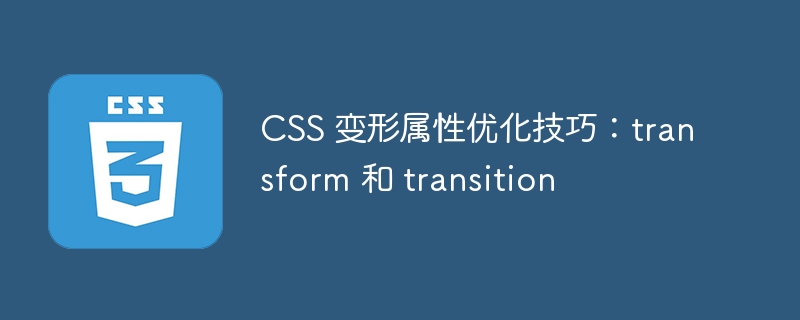

CSS deformation attribute optimization skills: transform and transition
Introduction:
With the continuous development of Web front-end technology, the application of CSS has become more and more widespread. This includes the implementation of deformation and animation effects on elements. The transform and transition properties of CSS provide a simple and effective way to achieve deformation and transition effects of elements. This article will introduce how to optimize the use of transform and transition attributes, and provide specific code examples.
1. Optimization skills of transform attribute
Sample code:
.element {
will-change: transform;
transform: translateZ(0);
}Sample code:
.element {
transform-origin: top left;
transform: rotate(45deg);
}Sample code:
<div class="element transform-effect"></div> <div class="element transform-effect"></div>
.transform-effect {
transform: scale(1.5);
}2. Optimization skills of transition attributes
Sample code:
.element {
transition-property: width, height; /* 只对width和height属性进行过渡 */
transition-duration: 0.3s;
}Sample code:
.element {
transition-delay: 0.5s; /* 延迟0.5秒后开始过渡效果 */
}Sample code:
.element {
transition-timing-function: cubic-bezier(0.4, 0.0, 0.2, 1); /* 自定义过渡函数 */
}Conclusion:
By rationally using the transform and transition attributes, we can achieve more efficient element deformation and transition effects. Improve performance and create more exciting animations with techniques such as hardware acceleration, local deformations, cached deformations, and specified transition properties, transition delays, and restricted transition effects. Hope this article is helpful to you.
The above content is for reference only, and the specific code implementation can be adjusted according to actual needs.
The above is the detailed content of CSS deformation property optimization tips: transform and transition. For more information, please follow other related articles on the PHP Chinese website!